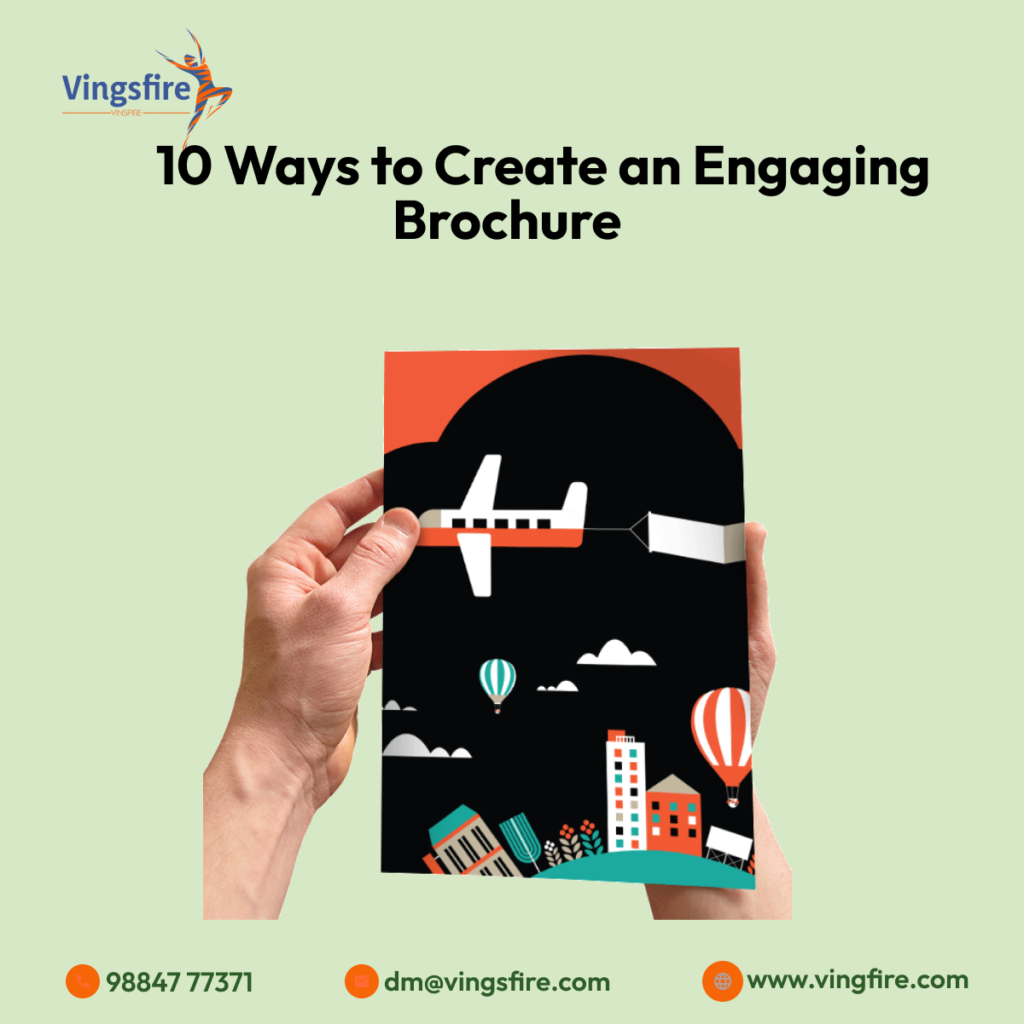
Introduction:
In the realm of marketing collateral, Brochure design stands as versatile tool for conveying information, promoting products or services, and engaging with target audiences. A well-designed brochure not only captures attention but also serves as a tangible representation of a brand’s identity and offerings.
However, creating an engaging brochure requires careful planning, creativity, and attention to detail. In this guide, we’ll explore ten effective strategies for crafting an engaging brochure that captivates readers, communicates key messages, and drives action.
1.Know Your Audience:
Understanding your target audience is paramount when creating an engaging brochure. Research your audience demographics, preferences, and pain points to tailor your messaging and design to resonate with their needs and interests.
Consider factors such as age, gender, occupation, and interests to ensure your brochure speaks directly to your audience and addresses their specific concerns or desires.
2.Define Clear Objective:
Before diving into the design process, establish clear objectives for your brochure. Determine what you want to achieve with your brochure, whether it’s to generate leads, promote a new product, or provide information about your services. By defining clear objectives, you can align your messaging, design, and call-to-action to effectively communicate your intended message and drive desired outcomes.
3. Craft Compelling Copy:
The copywriting plays a crucial role in the effectiveness of your brochure. Write clear, concise, and compelling copy that highlights the benefits of your products or services and addresses the needs and pain points of your target audience.
Use persuasive language, storytelling techniques, and engaging headlines to capture attention and keep readers interested. Additionally, incorporate calls-to-action (CTAs) throughout the brochure to encourage readers to take the next step, whether it’s visiting your website, contacting your sales team, or making a purchase.
4. Focus on Visual Appeal:
Visual appeal is essential for capturing attention and creating a memorable impression with your brochure. Invest in high-quality design elements, including imagery, graphics, and layout, to enhance the visual appeal of your brochure.
Use eye-catching visuals that are relevant to your brand and messaging, and ensure they are of high resolution and quality. Additionally, pay attention to typography, color scheme, and white space to create a cohesive and visually appealing design that guides readers through the brochure effortlessly.
5.Tell A Story:
Storytelling is a powerful technique for engaging readers and creating an emotional connection with your brand. Use your brochure to tell a compelling story about your brand, products, or services, highlighting key benefits, success stories, or customer testimonials.
Incorporate storytelling elements such as narrative structure, character development, and conflict resolution to captivate readers’ attention and evoke an emotional response. By weaving a narrative into your brochure, you can create a memorable and impactful experience that resonates with your audience long after they’ve finished reading.
6. Use Creative Formats:
Experiment with creative formats and layouts to make your brochure stand out and grab attention. Consider unconventional shapes, folds, or interactive elements that add visual interest and encourage engagement.
For example, you could use die-cutting techniques to create unique shapes or pop-up elements to surprise and delight readers. By thinking outside the box and exploring innovative formats, you can create a brochure that captures attention and leaves a lasting impression.
7. Highlight Benefits, Not Features:
When highlighting your products or services in your brochure, focus on the benefits they provide rather than just listing features. Clearly communicate how your offerings solve problems, meet needs, or improve the lives of your target audience.
Use compelling language and real-life examples to illustrate the value proposition of your products or services and show readers why they should choose your brand over the competition. By emphasising benefits rather than features, you can create a more persuasive and engaging message that resonates with your audience.
8. Provide Valuable Information:
Offering valuable information and insights is a great way to engage readers and establish your brand as a trusted authority in your industry. Include educational content, tips, or industry insights that provide value to your target audience and help them solve problems or achieve their goals.
By positioning your brand as a source of valuable information, you can build credibility and trust with readers and strengthen their connection to your brand.
9. Create a Strong Visual Hierarchy:
A strong visual hierarchy is essential for guiding readers’ attention and ensuring they focus on the most important elements of your brochure. Use hierarchy principles such as size, color, contrast, and placement to prioritise information and draw attention to key messages, headlines, and calls-to-action. Ensure that important information is easily scannable and accessible, with clear visual cues that guide readers through the brochure in a logical and intuitive manner.
10. Include Interactive Elements:
Incorporating interactive elements into your brochure can enhance engagement and create a memorable experience for readers. Consider adding QR codes, augmented reality (AR) elements, or scannable links that allow readers to access additional content, videos, or interactive experiences related to your products or services.
By providing interactive elements, you can encourage readers to engage further with your brand and explore additional information or offerings beyond the brochure itself.
Conclusion:
Creating an engaging brochure requires a thoughtful approach, creative thinking, and attention to detail. By knowing your audience, defining clear objectives, crafting compelling copy, and focusing on visual appeal, you can create a brochure that captivates readers’ attention, communicates key messages effectively, and drives action.
Experiment with creative formats, storytelling techniques, and interactive elements to create a memorable and impactful experience that resonates with your target audience and reinforces your brand’s identity and value proposition. With careful planning and execution, your brochure can become a powerful tool for engaging customers, generating leads, and achieving your marketing objectives.
